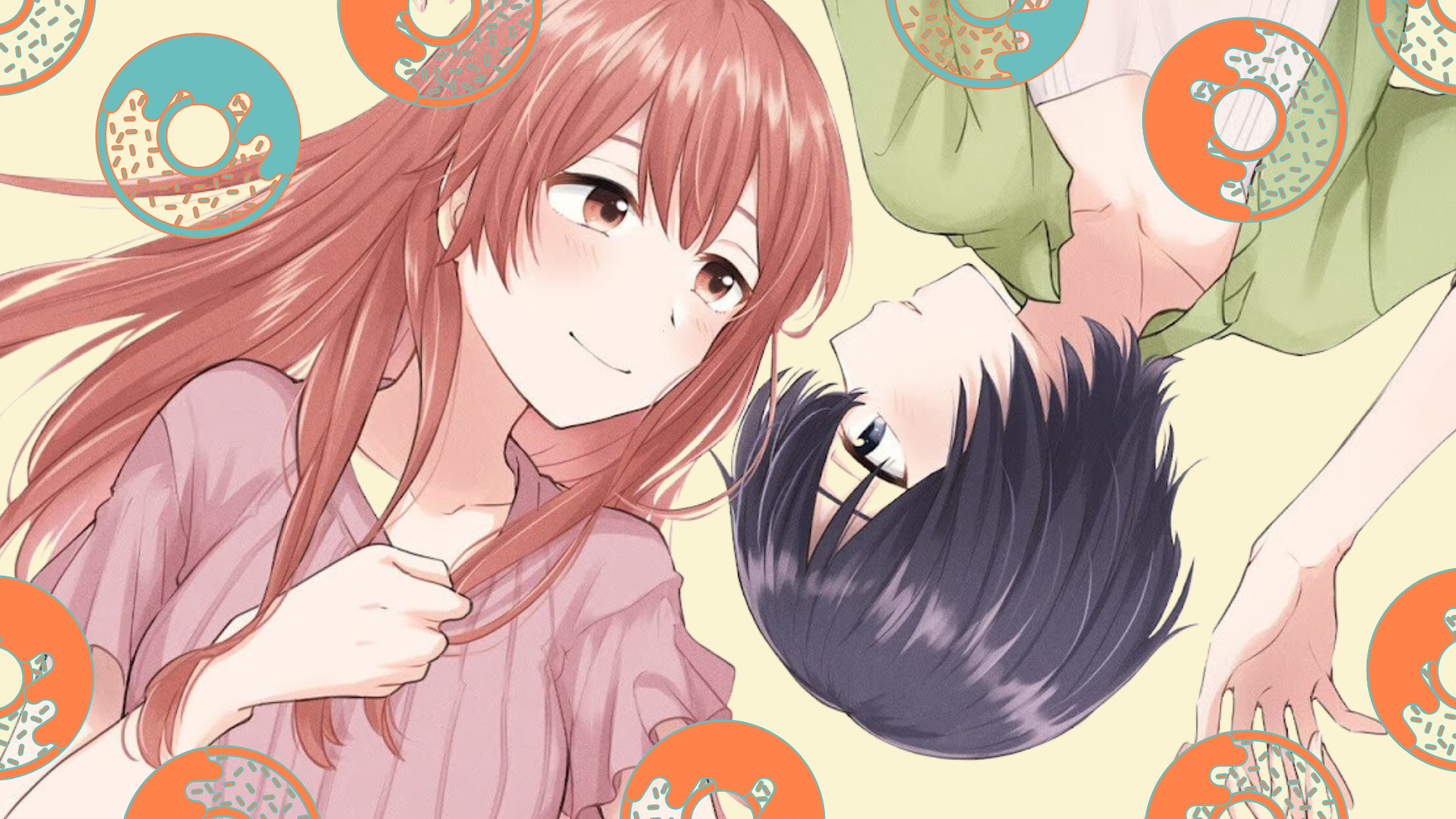Shio Usui’s Doughnuts Under A Crescent Moon is a 4-volume yuri manga series about two female office workers, Hinako and Asashi, who learn to experience love for the first time. It’s one of many manga series available that feature queer female adults, such as Mieri Hiranashi’s The Girl Who Can’t Get A Girlfriend and Sakomi Yuzaki’s She Loves To Cook, and She Loves To Eat. Yet Doughnuts Under A Crescent Moon manages to stand out for its complex portrayal of love and queerness through its lesbian asexual leads.
When the series starts, Hinako is a young woman plagued by self-doubt as she tries to use makeup and fashion to fit into the heteronormative expectations of her peers, as well as her mother hopes for her. At the same time, Asashi is a level-headed young woman who puts caring for her younger sister Subaru over her own wants and needs. When Hinako and Asashi cross paths after work one day, they gradually grow closer and start considering what kind of love they really want for themselves.
One factor that makes Hinako’s and Asashi’s character arcs significant is the commentary on gender roles, heteronormativity, and allonormativity. While I cannot personally claim to be an expert on modern Japanese women as a Black-Asian person from the United States, the expectations for Hinako and Asashi’s characters share some similarities with the expectations for other women of color. Some Black women are taught that their bodies and their femininity makes them vulnerable to men as soon as Black girls reach pubescent age. Meanwhile, Asian women are supposed to be quiet and subservient, with the occasional smile to appeal to men.
Both Hinako and Asashi are initially trapped by gender roles and heteronormativity due to the expectations in the workplace and in their personal lives. Hinako is considered “a nice girl” to her boss, an older man, because of her cheerful manner, fashionable nature, and ability to wear makeup. On the other hand, Asashi has a resting b*tch face, which causes her peers and boss to suggest that she “smile more” despite the fact she is an efficient worker without it.
As Hinako and Asashi start to get to know each other, they also carve a space to affirm themselves and each other. In Volume 1 of the series, the first time Asashi truly smiles is when she speaks to Asashi at work after the two of them have doughnuts together the previous night. In Volume 2, Hinako paints Asashi’s nails when the latter comes to visit her. It’s a small, yet impactful gesture that not only gives Asashi energy at work but also allows Hinako to have fun with makeup for the first time.
One notable way that Hinako starts to affirm herself in her personal life occurs near the end of the first volume. At an office mixer, Hinako tells a male coworker at an office mixer that it is okay to be alone if you want to. Given that the mixer was supposed to be a way for Hinako to meet a prospective male partner, this is a major step she takes to change herself. She takes this even further when she leaves her work friends to go visit a donut shop and then go see Asashi.
As mentioned earlier, Asashi allowing Hinako to paint her nails is really beneficial. However, if Asashi did not offer to share her doughnuts with Hinako after work, this may have never happened at all. Not only do the doughnuts become a special part of their friendship that brings them closer to each other, but it also becomes a metaphor that represents Hinako and Asashi’s imperfections and their unique way of showing affection and love. Due to sex and romance being considered the norm regardless of orientation, the lack of physical intimacy and signs of romance might be considered a “hole” that needs to be filled. However, like a doughnut, Hinako and Asashi still have their own unique sweetness that comes from how they love.
RelatedIn order to celebrate all the many kinds of love on offer this Valentine’s Day, check out these LGBTQ+ comics.
Although they start out as friends, Hinako and Asashi start to develop feelings for each other that can be considered love, but in a way that isn’t quite heteronormative, allonormative, or amanormative. Hinako and Asashi aren’t straight, but it is also stated that neither woman has any desire for physical intimacy beyond holding hands. Both of them end up “in love” with each other, but they don’t consider each other “lovers”. However, because the language for asexuality isn’t present in this manga, the nature of their relationship is up to the reader’s interpretation.
As a bi, grey aromantic asexual, I personally see Hinako and Asashi’s relationship as a queerplatonic relationship. While the definition of a queerplatonic relationship varies by person, Hinako and Asashi’s relationship reads this way to me because they have a bond that goes beyond friendship but doesn’t also contain the usual displays of romance. Instead of kissing or having sex, the two show their love for each other by holding hands, eating doughnuts, and saying words of encouragement that include “I love you.”
Of course, seeing their relationship as romantic is also valid. After all, it is possible for a gay woman to not want to have sex, but still desire a romantic relationship. Asexuality and other orientations are not oil and water and this manga does a great job of showing how they can overlap.
Perhaps the most important thing this manga does is show that there is no one way to love and show love for another person. Just because a gay woman doesn’t want to kiss or have sex, doesn’t mean that they are incapable of love or don’t deserve to be loved. Like doughnuts, love has many flavors worth noticing.♦















